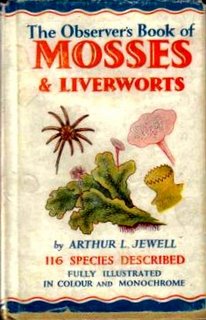Birds, Aircraft, Castles, Pond Life, Wild Flowers, Heraldry, Architecture, Dogs, Cats, Coins, Flags, Grasses, Cacti and Other Succulents, Postage Stamps, Modern Art, Weather, Paris, Music, Railway Locomotives of Britain, Horses and Ponies, Glass…
And so on and so on and so on. These are of course The Observer’s Book of…..
They were published from 1937 to 1982 and are now collectors’ items selling at prices ranging from a few pence for some titles published in the 1970s heyday of the series to hundreds of pounds for a first edition of The Observer's Book of Birds.

If the title of this 1964 publication makes your heart beat faster you should know that a copy was recently for sale on eBay at around £18.
Acknowledgements to Alan Parker/Stella & Rose's Books









